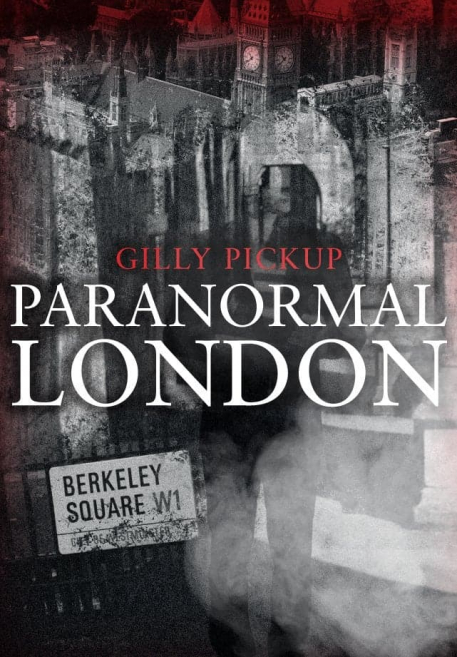
Reviewed by Graham Kidd
This slim volume contains what the title suggests, spooky tales based on various places across London, and as such it is entertaining and, up to a point, informative. The author’s main aim seems to be to amuse, if not titillate. There are some 78 stories of greater or lesser length and interest.
Gilly Pickup describes herself as a freelance travel and special features journalist, who has had published some eleven books of a similar nature, including A to Z of Curious London as well as some popular self-help type books, such as The Little Book of Affirmations.
She has methodically divided this book into eleven chapters by types of venue - homes, hospitals, theatres etc. This is not unreasonable, but another way could have been by area, accompanied by a map, perhaps, so that, if one wanted, one could have walked through a bit London from featured place to place. Open spaces are included, which may increase one’s alertness to surroundings, in Green Park for example, where there is a haunted tree.
All types of haunting are indeed covered, and in the introduction she helpfully classifies ghosts into interactive, residual and demons. A close reading might indicate whether particular types of venue were associated with what particular type of ghost. Pubs, she points out, report the most, unsurprisingly. A perceptive remark is that theatres may be also haunted frequently because actors are required to be intuitive and imaginative. Grinning severed heads, faceless hooded phantoms, solid looking apparitions of soldiers, unaccountable smells, icy chills, haunted objects such as a jacket which strangled anyone who tried it on, every variety of spookiness features in her tales. Through necessity, of the type of book one supposes, each section is rather brief, but mostly includes contextual material, historical and otherwise, which is of interest, such as the reason that “witch marks” were carved on the floors at Kew Palace, and the fact that Lillie Langtree seduced the future Edward 7th at 21 Pont Street.
Perhaps inevitably sources of most of the tales are lacking, and instead she uses devices such as “It has been said …” “There have been reports ...”, “It seems that ...”, and so on, which can be tiresome. If this is not a book of science, then one might ask how good is the author at writing a ghost story to maximum thrilling effect. She is certainly good at priming the reader with phrases such as, at the beginning of the introduction, “If you are not a believer in the paranormal when you start to read this book, I can almost guarantee that you will be by the time you reach the end” - a challenge if ever there was one. Likewise “Are you ready to see a headless duke, visit the graves of plague victim and come into contact an unseen force that tries to push you downstairs?” I think that last is quite compelling!
First person reports are naturally the most gripping, and perhaps understandably she has few of them, but some of these are good - proper evidence, one might say, though I have to exclude those reported by “investigators” with devices, which beg too many questions. Without clear sources, one is at the mercy of urban myth making. The tale of the disappearing pillion passenger hitch-hiker in the Blackwall Tunnel I have heard before in relation to an area of country side in South Africa, but otherwise identical. A thesis has probably been written about the worldwide spread of urban myths.
Detail is sometimes lacking for no obvious reason. She has a tendency to write “A few years ago” when the source probably could say “In 2014” for example. It seems idle, but perhaps that is the scientist speaking when this book is in fact purely for entertainment. Nevertheless, titillation in my view is probably enhanced by detail, even if spurious. There is nothing like a detailed description to get the imagination going.
Photos certainly help, and the book is illustrated with very good colour photos of the places, taken mostly by the author. The book itself is a very solidly and nicely produced paperback, a little too big for the pocket, which I think is regrettable for a book to refer to on one’s travels, a small point but a personal bug bear.
In summary, this is not a book for the serious researcher and does not pretend to be. It might be classed as a primer for those whose curiosity in these matters is beginning to be aroused, or a survey of the better known traditional stories of hauntings in London, and some more recent ones (e.g., involving a crash at Heathrow in 1948). It certainly adds some interesting and out of the ordinary information for tourists who are exploring London. It is written in the style of a features editor, playful and lively, and as such is easy to read.
It would make an excellent stocking filler for a curious person, about 12 years old at heart. And why not?!

